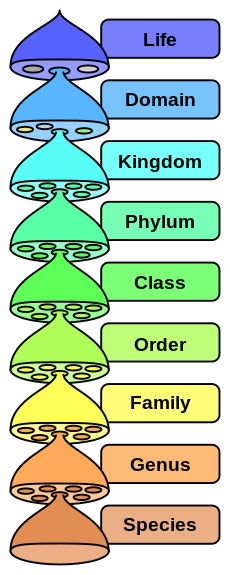From YouTube
In biology, a species is the basic unit of biological classification and a taxonomic rank. A species is often defined as the largest group of organisms in which two individuals can produce fertile offspring, typically by sexual reproduction. While this definition is often adequate, when looked at more closely it is problematic. For example, with hybridisation, in a species complex of hundreds of similar microspecies, or in a ring species, the boundaries between closely related species become unclear. Other ways of defining species include similarity of DNA, morphology or ecological niche.
All species are given a two-part name, a "binomial". The first part of a binomial is the genus to which the species belongs. The second part is called the specific name or the specific epithet (in botanical nomenclature, also sometimes in zoological nomenclature). For example, Boa constrictor is one of four species of the Boa genus.
Species were seen from the time of Aristotle until the 18th century as fixed kinds that could be arranged in a hierarchy, the great chain of being. In the 19th century, biologists grasped that species could evolve given sufficient time. Charles Darwin's 1859 book The Origin of Species explained how species could arise by natural selection. Genes can sometimes be exchanged between species by horizontal gene transfer; and species may become extinct for a variety of reasons.

No comments:
Post a Comment